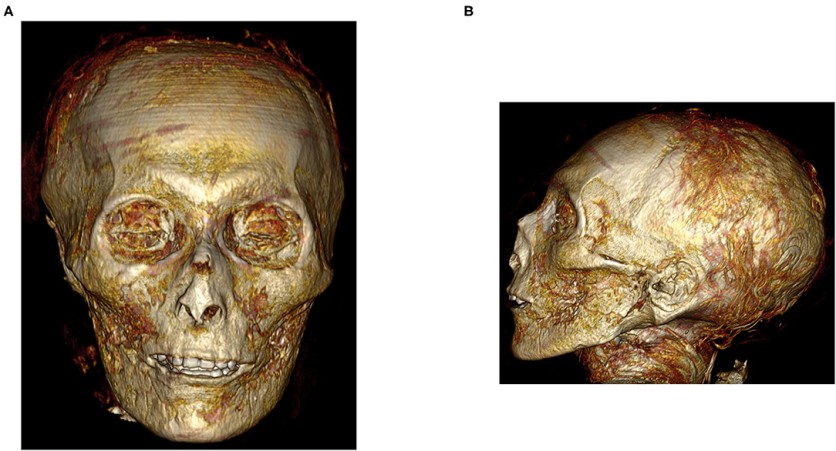
Using a CT scan, researchers digitally unwrapped the mummified remains of a Pharaoh, King Amenhotep I.
Using Technology to Unwrap the Mummy of Amenhotep I
Archaeologists discovered the mummy of Amenhotep I in Deir el-Bahari, a village within Egypt's Valley of the Kings, in 1881. But scientists have been unable to open it for 140 years because they fear damaging his ornate face mask and bandages.
In 1902, the mummies of the kings of Egypt were moved to the Egyptian Museum at Tahrir in Cairo, where they remain today. The mummy of Amenhotep I continues to remain wrapped even after almost a century.
Fortunately, thanks to computer tomography (CT) technology, they don't need to unwrap the mummy the traditional way. Researchers at Cairo University recently digitized Amenhotep to unveil more details about his life and dynasty.
The lead author of the study, Dr. Sahar Saleem, told PA Media the details they discovered, saying Amenhotep was about 35 years old when he passed away.
"Amenhotep I seems to have physically resembled his father: he had a narrow chin, a small narrow nose, curly hair, and mildly protruding upper teeth," said Dr. Saleem.
It did not appear that he suffered any external wounds that would have contributed to his death. However, they did discover that grave robbers may have caused various post-mortem injuries to the body.
After Amenhotep's death, priests of the 21st dynasty reattached the head and neck using resin-treated linen bands, along with some 30 amulets they found hidden among his bandages.
With the 3D model of the wrapped mummy, each of its parts could be seen: the head mask, the bandages around the mummy, and the mummy itself.
Through digital unwrapping of the mummy, layers were peeled away from the mummy to reveal the exterior and interior, allowing archaeologists and researchers to study it in detail.
Also Read : Radiology Suggests Chest CT Scans Work Better for Coronavirus Detection! It Also Lets You Know Virus Origin
The Historical Value of Amenhotep I's Unwrapped Mummy
With this digital unwrapping, researchers can provide an insight into one of the most fascinating periods of Egyptian history, the New Kingdom period under Amenhotep I, through the help of technology.
He was the first pharaoh of the Egyptian 18th dynasty, which would include Akhenaten, the challenging "heretic" pharaoh who introduced his kingdom to a monotheistic religion that revolves around the sun.
Amenhotep ruled between 1525 and 1504 BCE and is Tutankhamun or King Tut's father.
In 1977, archaeologists used CT scans to examine a mummy for the first time. As technology has evolved and become more accessible, researchers have been able to study mummies in ways they could not before.
"We show that CT imaging can be profitably used in anthropological and archeological studies on mummies, including those from other civilizations, for example Peru," concluded Saleem.
Amenhotep I's mummy and reburial intervention can be greatly elucidated through digital unwrapping using a CT scanner, revealing non-invasively the physical attributes of the King, understanding mummification in the early 18th Dynasty, and determining the reburial procedure for the 21st Dynasty.
Related Article : [PHOTOS] Mummified Animals' 3D Post-Mortems Reveal Gruesome 'Secrets' of Ancient Life
This article is owned by Tech Times
Written by Thea Felicity
ⓒ 2025 TECHTIMES.com All rights reserved. Do not reproduce without permission.




